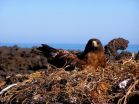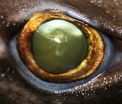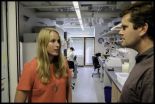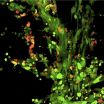(Press-News.org) Fire season has arrived in California with vengeance in this third year of extended drought for the state. A series of large fires east of Redding and Fresno, in Yosemite, and on the Oregon border prompted Gov. Jerry Brown to declare a state of emergency on Sunday, August 3rd.
As force of destruction and renewal, fire has a long and intimate history with the ecology of California. Ecological scientists will discuss aspects of that history in detail at the upcoming 99th Annual Meeting of the Ecological Society of America on August 10 – 15th, 2014.
"Big fires today are not outside the range of historical variation in size," said Jon Keeley, an ecologist based in Three Rivers, Cal., with the U.S. Geological Survey's Western Ecological Research Center, and a Fellow of the Ecological Society.
Keeley will present research on the "association of megafires and extreme droughts in California" at the Annual Meeting as part of a symposium on understanding and adapting to extreme weather and climate events.
He will synthesize his research on the history of wildfire across the entire state, contrasting historical versus contemporary and forested versus non-forested patterns of wildfire incidence. He and his colleagues reviewed Forest Service records dating to 1910, as well as a wealth of newspaper clippings, compiled by a Works Progress Administration archival project, that stretch back to the middle of the last century.
Understanding historical fire trends, Keeley said, means recognizing that when we talk about wildfire in California we are talking about two very different fire regimes in two different ecosystems: the mountain forests and the lower elevation chaparral, oak woodlands, and grasslands.
The chaparral shrublands of southern California, and similar sagebrush ecosystems in the Great Basin, are not adapted to the kind of frequent fire typical of the mountain conifer forests in California. Fires in the lower elevation ecosystems are always crown fires, which kill most of the vegetation. In the millennia before humans arrived, these ecosystems burned at intervals of 100 to 130 years.
These lower elevation ecosystems experienced unprecedented fire frequency in the last century, with fire returning to the same area every 10 to 20 years, altering the ecology of the landscape.
"In Southern California, lower elevation ecosystems have burned more frequently than ever before. I think it's partly climate, but also people starting fires during bad conditions," Keeley said. Bad conditions include extended droughts and dry fall days when the Santa Ana winds blow through the canyons.
In high elevation conifer forests, spring temperatures and drought are strongly correlated with fire, and Keeley thinks climate change and management choices are likely playing a role in current trends. But in the hotter, drier valleys and foothills cloaked in grass, oak, and chaparral, human behavior dominates. Through arson or accident, in southern California, over 95% of fires are started by people, according to Cal Fire.
"Climate change is certainly important on some landscapes. But at lower elevation, we should not be thinking just about climate change," said Keeley. "We should be thinking about all global change." Land use change and population growth create more opportunities for fires to start.
The high frequency of fire has instigated a persistent switch from chaparral to grass in some areas. Frequent fire favors quick germination and spread of forbs and grasses. Most grasslands in California are not native.
Since the more recent arrival of immigrants from Europe and Asia, several of the exotic grasses they brought with them from the Old World have been quick to capitalize on the opportunities presented by fires to spread invasively throughout roughly a quarter of chaparral country. To Keeley, this means that prescribed fires in lower elevation ecosystems now have entirely different consequences for the regional ecology than they did when native Californian peoples set fires to manipulate resources.
"When the Native Americans did it, they did not affect native species so much, because native perennial bunchgrass and other herbaceous species grew in," said Keeley. "Once the aliens got here, it completely changed."
INFORMATION:
Ecological Society of America's 99th Annual Meeting, August 10-15th, 2014, in Sacramento, Cal.
Main Program Press Information App
Symposium 5-4-The association of megafires and extreme droughts in California
In: Extreme Weather and Climate Events: Understanding and Adapting to Ecosystem Responses
Tuesday, August 12, 2014: 9:40 AM
Speaker: Jon E. Keeley, Western Ecological Research Center, U.S. Geological Survey, Three Rivers, Cal.
Organized oral session 5-2-A history of megafires and extreme droughts in California
In: Shrubland Resilience and Recovery After Disturbance
Monday, August 11, 2014: 1:50 PM
Speaker: Jon E. Keeley, Western Ecological Research Center, U.S. Geological Survey, Three Rivers, Cal.
More fire ecology at the upcoming meeting: http://esa.org/am/info/press/topics/#fire
Organized oral session 6-6: What do changing climate suggest about future fire frequency in California
In: Ecological drought in California forests: linking climate science and resource management
Monday, August 11, 2014: 3:20 PM, rm 307
Speaker: Mark W. Schwartz , Environmental Science & Policy, University of California, Davis, Davis, Cal.
More drought ecology at the upcoming meeting: http://esa.org/am/info/press/topics/#drought
Additional Resources:
Jon E. Keeley and Paul H. Zedler (2009). Large, high-intensity fire events in southern California shrublands: debunking the fine-grain age patch model. Ecological Applications 19:69. http://dx.doi.org/10.1890/08-0281.1
Safford, Hugh D.; Van de Water, Kip M. (2014). Using Fire Return Interval Departure (FRID) Analysis to Map Spatial and Temporal Changes in Fire Frequency on National Forest Lands in California. Res. Pap. PSW-RP-266. Albany, CA: U.S. Department of Agriculture, Forest Service, Pacific Southwest Research Station. 59 p. http://www.fs.fed.us/psw/publications/documents/psw_rp266/
Online Special Issue: Prescribed burning in fire-prone landscapes. (2014). Frontiers in Ecology and the Environment 11 (August). http://www.esajournals.org/toc/fron/11/s1
The Ecological Society of America is the world's largest community of professional ecologists and a trusted source of ecological knowledge. ESA is committed to advancing the understanding of life on Earth. The 10,000 member Society publishes five journals, convenes an annual scientific conference, and broadly shares ecological information through policy and media outreach and education initiatives. Visit the ESA website at http://www.esa.org.
History of fire and drought shapes the ecology of California, past and future
2014-08-06
ELSE PRESS RELEASES FROM THIS DATE:
Galápagos hawks hand down lice like family heirlooms
2014-08-06
Say what you will about the parasitic lifestyle, but in the evolution of life on Earth, it's a winner.
Given that about half of all known species are parasites, biologists have long hypothesized that the strategy of leeching off other organisms is a major driver of biodiversity. Studying populations of Galápagos hawks (Buteo galapagoensis) and feather lice that live in their plumage (Degeeriella regalis), a group led by University of Arizona ecologists and evolutionary biologists has gathered some of the first field evidence suggesting that a phenomenon called co-divergence ...
NASA's Hubble finds supernova star system linked to potential 'zombie star'
2014-08-06
Using NASA's Hubble Space Telescope, a team of astronomers has spotted a star system that could have left behind a "zombie star" after an unusually weak supernova explosion.
A supernova typically obliterates the exploding white dwarf, or dying star. On this occasion, scientists believe this faint supernova may have left behind a surviving portion of the dwarf star -- a sort of zombie star.
While examining Hubble images taken years before the stellar explosion, astronomers identified a blue companion star feeding energy to a white dwarf, a process that ignited a nuclear ...
New research links tornado strength, frequency to climate change
2014-08-06
TALLAHASSEE, Fla. — New research by a Florida State University geography professor shows that climate change may be playing a key role in the strength and frequency of tornadoes hitting the United States.
Published Wednesday in the journal Climate Dynamics, Professor James Elsner writes that though tornadoes are forming fewer days per year, they are forming at a greater density and strength than ever before. So, for example, instead of one or two forming on a given day in an area, there might be three or four occurring.
"We may be less threatened by tornadoes on a ...
Fipronil and imidacloprid reduce honeybee mitochondrial activity
2014-08-06
PENSACOLA, Fla. — New research published in Environmental Toxicology and Chemistry addresses the effects of two broad-spectrum systemic insecticides, fipornil and imidacloprid, on honeybees. These insecticides are widely used in agriculture, and the authors conclude that fipronil and imidacloprid are inhibitors of mitochondrial bioenergetics, resulting in depleted cell energy. This action can explain the toxicity of these compounds for honeybees.
Scientists are urgently trying to determine the causes of colony collapse disorder and the alarming population declines of ...
Community religious beliefs influence whether wives work outside home, Baylor study finds
2014-08-06
Married women who live in communities in which a higher proportion of the population belongs to conservative religious traditions — such as evangelical or Mormon — are more likely to choose not to work outside the home, even if the women are not members of those faith groups, according to a Baylor University study.
The study — "Work-Family Conflict: The Effects of Religious Context on Married Women's Participation in the Labor Force" — appears in the journal Religions in a special issue, "Religion, Spirituality, and Family Life."
While previous research has shown individual ...
Photon hunting in the twilight zone
2014-08-06
The eyes of deep-sea bioluminescent sharks have a higher rod density when compared to non-bioluminescent sharks, according to a study published August 6, 2014 in the open-access journal PLOS ONE by Julien M. Claes, postdoctoral researcher from the FNRS at Université catholique de Louvain (Belgium), and colleagues. This adaptation is one of many these sharks use to produce and perceive bioluminescent light in order to communicate, find prey, and camouflage themselves against predators.
The mesopelagic twilight zone, or about 200-1000 meters deep in the sea, is a vast, ...
Young loggerhead turtles not going with the flow
2014-08-06
Juvenile loggerhead turtles swim into oncoming ocean currents, instead of passively drifting with them, according to a study published August 6, 2014 in the open-access journal PLOS ONE by Donald Kobayashi from National Oceanic and Atmospheric Administration and colleagues.
After loggerhead turtle hatchlings leave nesting beaches, they live in the ocean for 7-12 years before migrating to coastal habitats. Juvenile loggerhead turtles have good swimming abilities, but scientists aren't sure if they passively drift in ocean currents or actively swim. Combining turtle movement ...
HSCI researchers identify another potential ALS treatment avenue
2014-08-06
Cambridge, MA, Aug 6 - A series of studies begun by Harvard Stem Cell Institute (HSCI) scientists eight years ago has lead to a report published today that may be a major step forward in the quest to develop real treatments for amyotrophic lateral sclerosis, ALS, or Lou Gehrig's disease.
The findings by Harvard professor of Stem Cell and Regenerative Biology (HSCRB) Kevin Eggan and colleagues also has produced functionally identical results in human motor neurons in a laboratory dish and in a mouse model of the disease, demonstrating that the modeling of human disease ...
Dr. Brenna Anderson publishes commentary in BJOG
2014-08-06
Brenna Anderson, MD, of the Division of Maternal-Fetal Medicine at Women & Infants of Rhode Island and an associate professor of obstetrics and gynecology at The Warren Alpert Medical School of Brown University, has published a commentary in the current issue of BJOG: An International Journal of Obstetrics and Gynaecology, now available online. The commentary is entitled "The time has come to consider neonatal outcomes when designing embryo transfer policies."
Dr. Anderson offers her commentary in response to an article in the same issue by Kamphius et al. in which the ...
Brain tumors fly under the body's radar like stealth jets, new U-M research suggests
2014-08-06
ANN ARBOR, Mich. — Brain tumors fly under the radar of the body's defense forces by coating their cells with extra amounts of a specific protein, new research shows.
Like a stealth fighter jet, the coating means the cells evade detection by the early-warning immune system that should detect and kill them. The stealth approach lets the tumors hide until it's too late for the body to defeat them.
The findings, made in mice and rats, show the key role of a protein called galectin-1 in some of the most dangerous brain tumors, called high grade malignant gliomas. A research ...





